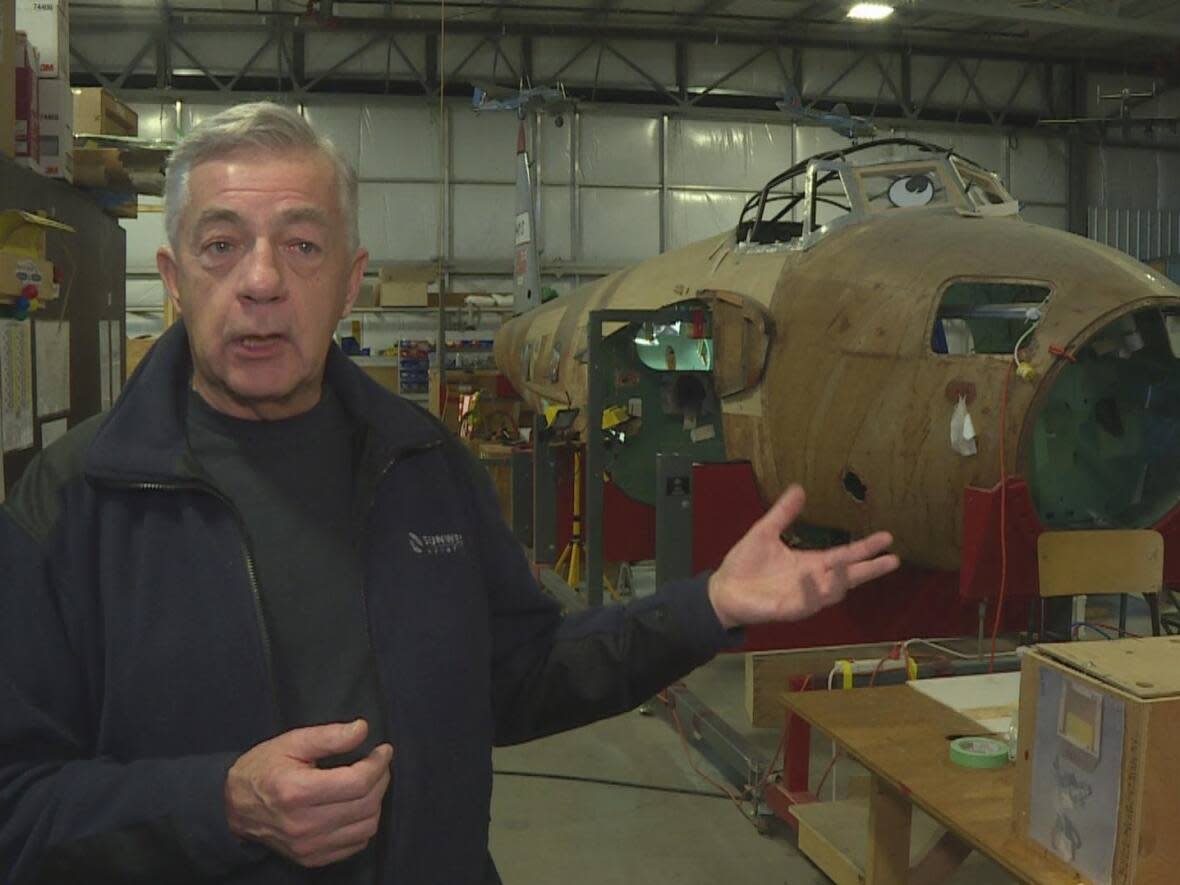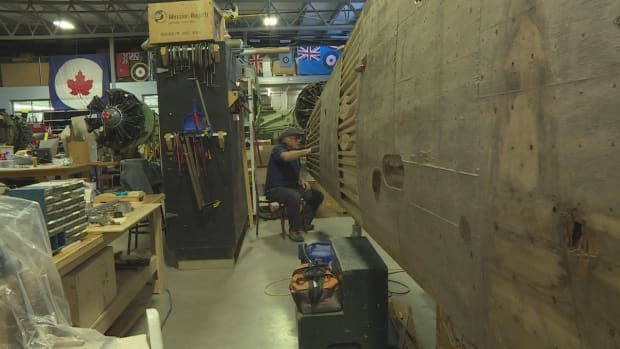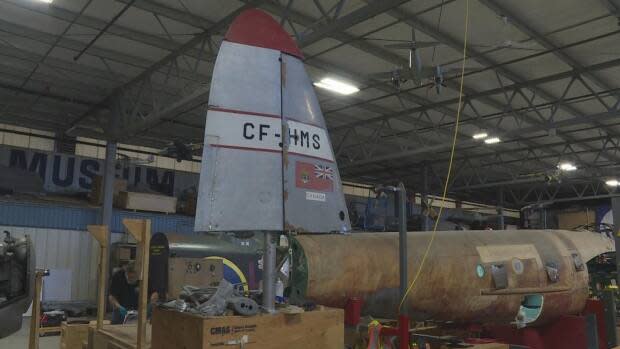This plane helped map Canada. Now a group of Calgarians are restoring it

In a workshop at the Bomber Command Museum of Canada in Nanton, Alta., volunteers scrape paint and assemble parts around the wooden wings and fuselage of a historic de Havilland Mosquito.
For 10 years, a range of people — from aviation industry experts to people with very little experience — have been gathering to restore the aircraft owned by the City of Calgary.
They're at the halfway mark of the project, but a love for aviation history, along with the dedication of the volunteers, is what's driving the long-term plan.
"It's a passion for doing it, and it's a passion to see it through to the end — and it's such a unique airplane," said Gary Toffelmire, who has been volunteering with the project for more than eight years.

"There's just nothing like a Mosquito."
Built in 1946 in Hampshire, U.K., the Mosquito served in the Second World War and in peacetime. It performed high-altitude photo mapping work across Canada with Spartan Air Services.
In 2010, the Calgary Mosquito Society, the non-profit organization responsible for restoring the aircraft, entered into an arrangement with the Bomber Command Museum of Canada, a community museum that has developed an expertise in restoring vintage warbirds.
Part of the agreement says the society can use the museum's shop space, along with its specialized tooling and the members' expertise, to restore the plane in exchange for allowing visitors into the facility and giving them the opportunity to see the plane up-close.

"It's a joy to come in here and take something that's so historic and so old and bring it back to life again," said Chris Durtnall, who's been serving as a volunteer on the project for more than five years.
"This is a huge part of our history, my history, coming from Britain, and I just think it's a worthwhile cause."
In its proposal to the city, the society offered to pay the full cost to restore the Mosquito. But in December 2011, the city agreed to fund half the cost of the restorations and said it would match all donations the society received.
The society is paying for the remainder of the restoration costs through donations.
Richard de Boer, president of the Calgary Mosquito Society, emphasized the importance of the project, saying it honours those who gave their lives, and those who designed the aircraft and served with it.
"And to educate people about the incredible work done by these airplanes, both in wartime and in peacetime," he said. "That's the legacy. It's the touchstone to tell the important stories about the people who were involved with this airplane."
The goal is to restore the Mosquito to function as a static display but with working engines — and to create materials that the society says will educate the public on the aircraft and the role aviation has played on the exploration of Canada.


